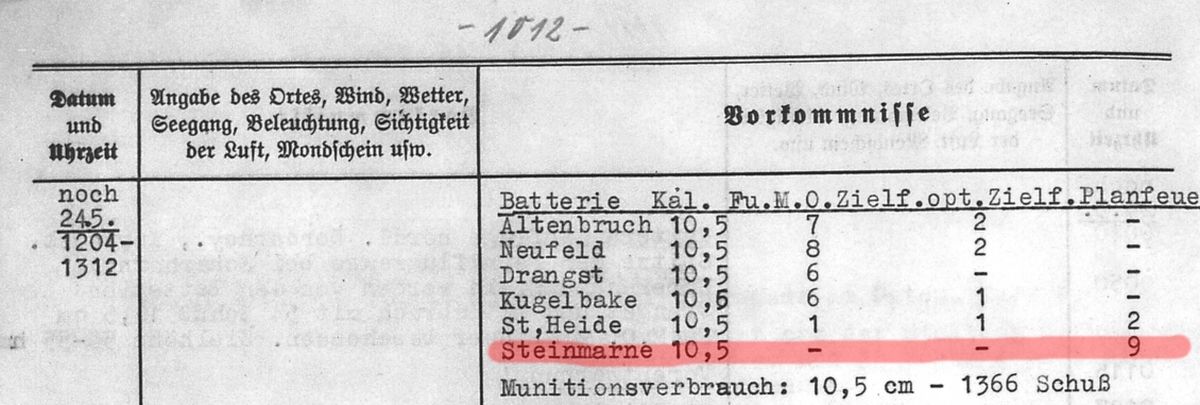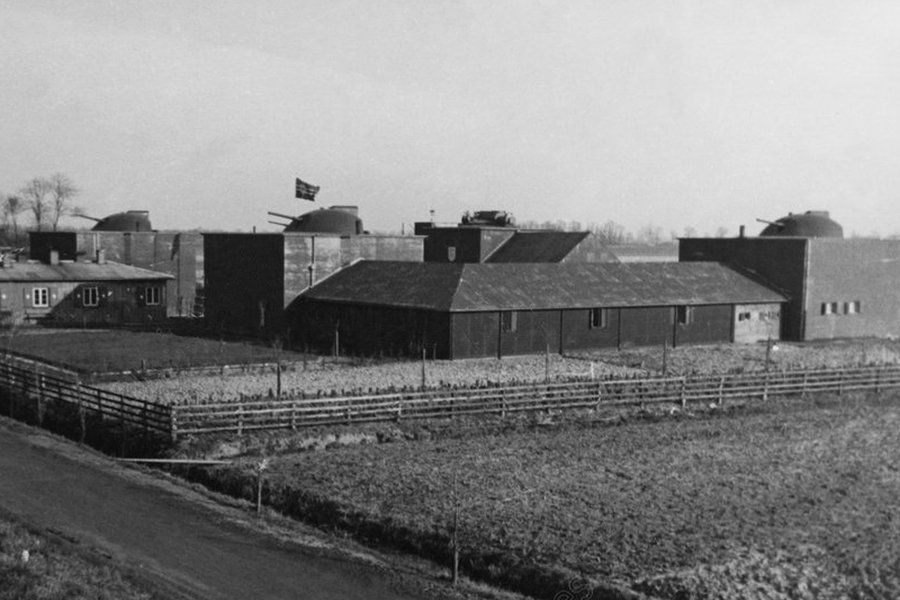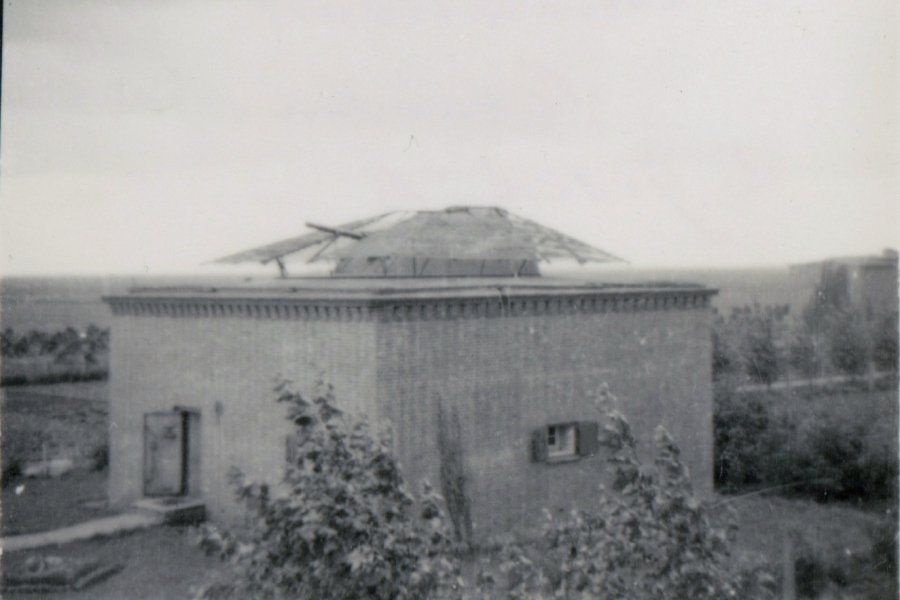
Die Flakbatterie Duhnen wurde 1943 auf der Ostseite der Marine Flakschule gebaut. Vermutlich wurde sie sogar als weitere Übungsbatterie geplant, wobei der Verlauf des Krieges mit der Steigerung vieler Überflüge mit großen Bomberformationen in diesem Fall wohl eine Nutzungsänderung mit sich führte. Am 15.04.1943 ging sie mit zwei 10,5 cm SK C/32 auf je einer Hochbettung in den Einsatz. Zudem wird vor Ort ein optischer Feuerleitrechner vorhanden gewesen sein, da die Batterie ohne das Gerät nicht optimal funktioniert. Um welchen Typ es sich allerdings handelte, ist nicht bekannt. Auch der Schutz durch leichte Flak ist nicht erwiesen, sie lässt sich nur auf einigen schlechten Luftaufnahmen erahnen.
Im August 1944 wurden die Geschütze allerdings schon wieder demontiert und in der neu aufgestellten Batterie Altenwisch des UGRUKO Balje aufgestellt. Danach tauchte die Batterie Duhnen in Berichten nicht mehr auf, offenbar wurde sie danach nicht wieder aufgestellt.
Bereits am 10.01.1941 wird die Batterie Duhnen allerdings bereits mit 2 x 8,8 cm und 2 x 2 cm in einem Kriegstagebuch Nachts einsatzklar erwähnt. Vermutlich handelt es sich dabei aber um die Geschütze der Übungbatterie, die außerhalb der Lehrgangszeiten zum offiziellen Flakschutz genutzt wurden. Ab 06.05.1942 waren in der Stellung eine 3,7 cm SK und eine 2 cm C30 schießklar aufgebaut.

To the east of the Marine Flak School was the new Duhnen Flak Battery. There were several camouflaged bunkers on the site; these buildings were built in 1943 by the Marine Construction Battalion 314. The dike line is visible in the front. Photo source: MB
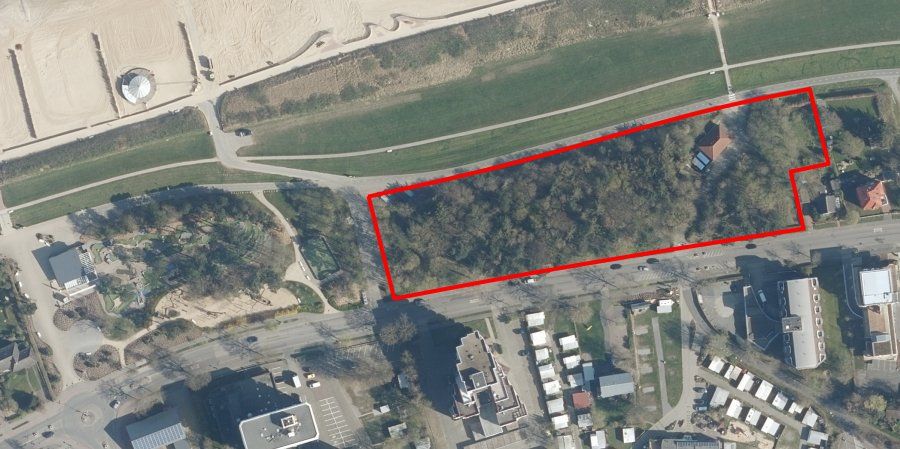
Das Gelände (Rot umrahmt)
ist heutzutage ein kleiner Küstenwald. Von den Bunkern und allem anderen ist heutzutage nichts mehr zu sehen.
Fotoquelle: Oliver Wleklinski
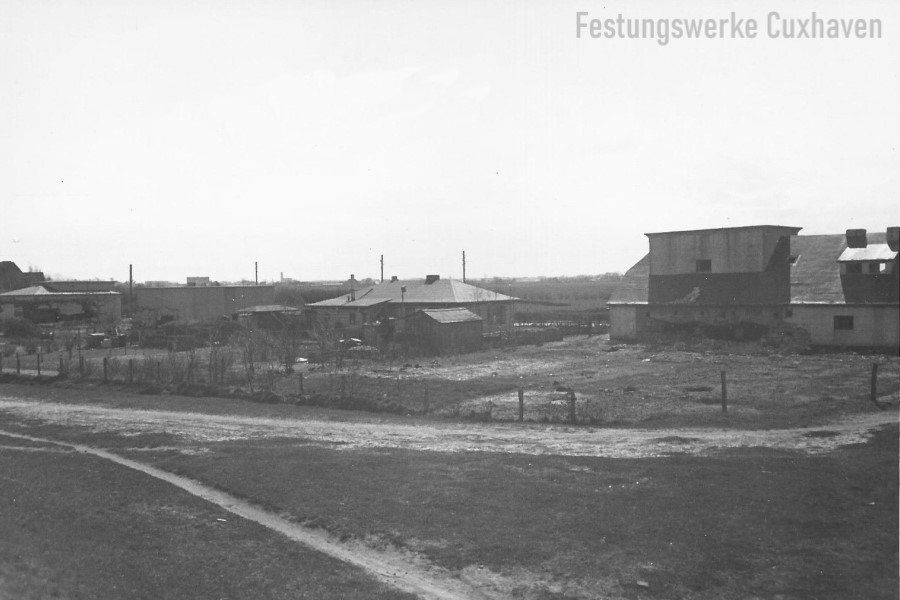
View from the dyke crossing, the engine house bunker on the right. On the left are other bunkers disguised as residential buildings. In the background you can see the tower of the Church of Grace in Döse.Photo source: Oliver Wleklinski
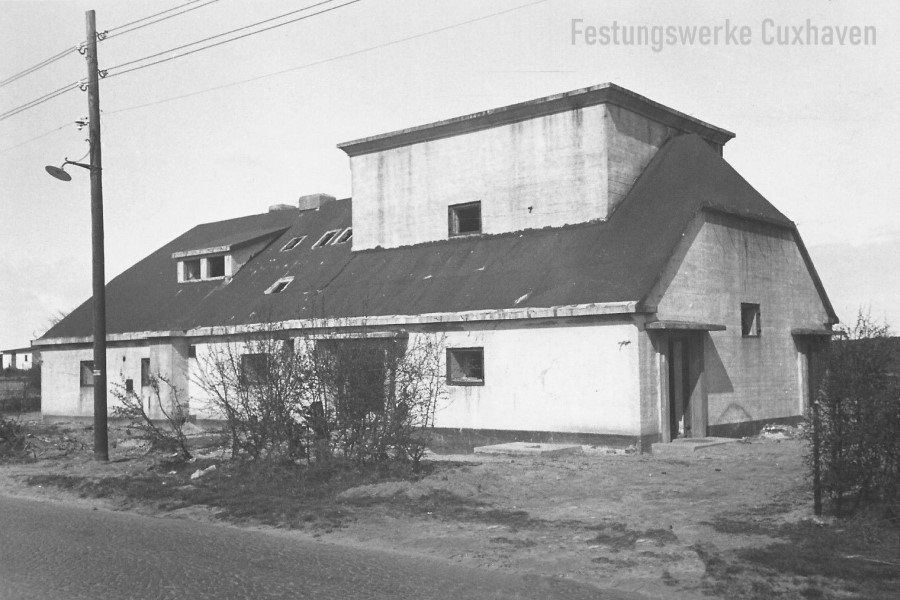
The engine house bunker was located at the current entrance to the "Schwerlastrampe Duhnen" mudflat wagon docking area, with Cuxhavener Straße in front of it. It was built in the shape of an old farmhouse. On top was a gun pedestal for anti-aircraft guns. Photo source: Oliver Wleklinski
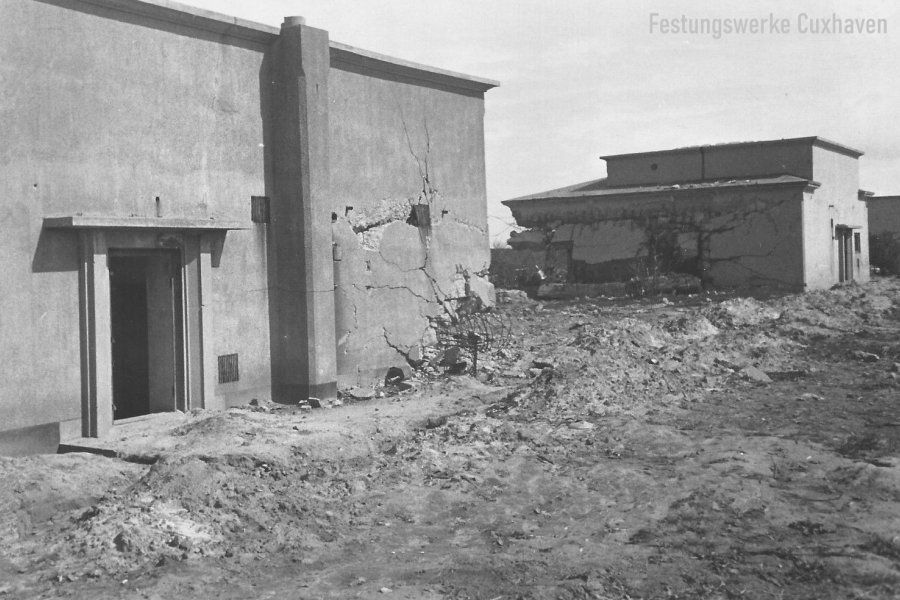
The bunkers of the Duhnen battery destroyed after the explosions. The heavy anti-aircraft guns were on top of them in raised bunks.Photo source: Oliver Wleklinski
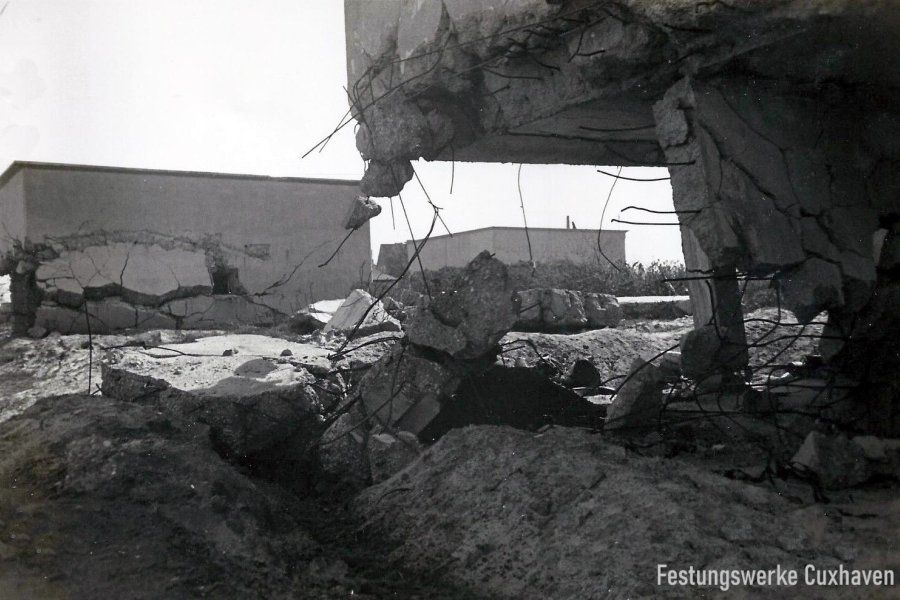
In 1949, all the bunkers except the engine house were rendered unusable and subsequently demolished on the orders of the British occupying forces. The engine house was later demolished in the 1950s. Even the massive concrete walls could not withstand the force of the explosions. Photo source: Oliver Wleklinski
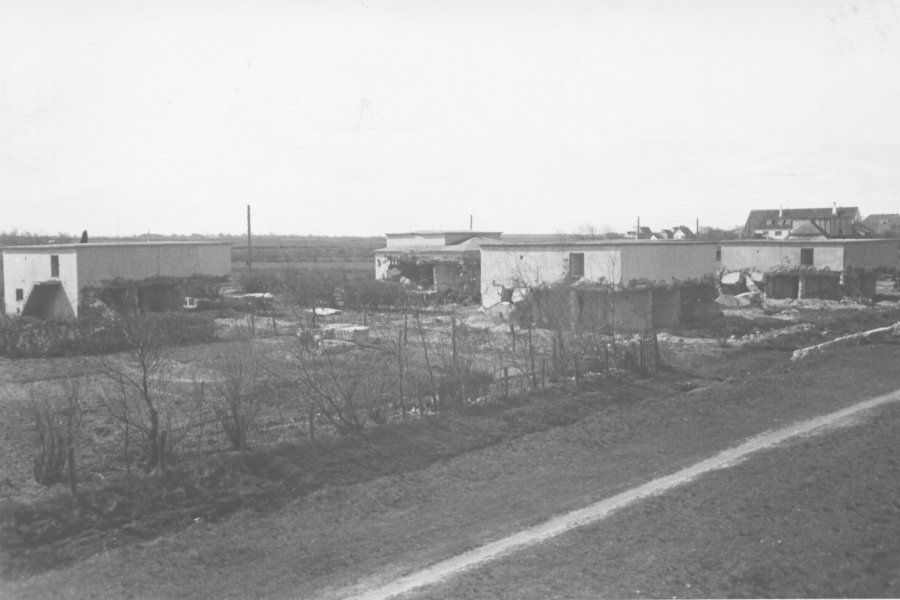
View from the dike of the former anti-aircraft battery. The building on the right is the Hotel Seelust.Photo source: Gerd Wildfang
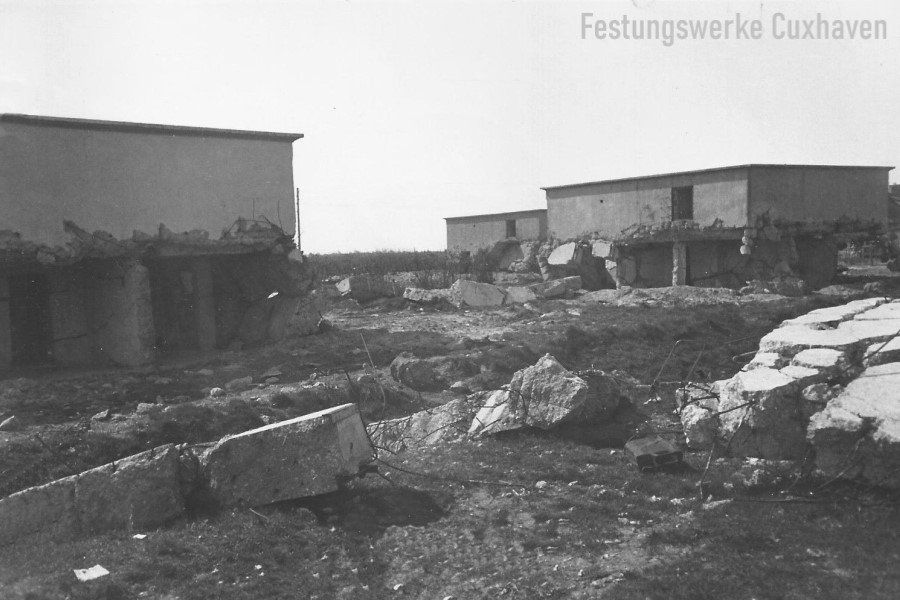
During the demolition, a serious accident occurred. The son of the village blacksmith hit an unexploded device with his flame cutter. He was seriously injured in the explosion that followed and lost his sight.Photo source: Oliver Wleklinski
Von der Flakbatterie in Duhnen selbst und dem Betrieb von 1943-1944 gibt es leider keine Fotos oder Pläne. Als Beispiel, wie das Ganze ausgesehen haben könnte, sind die Fotos der Batterien Schortens, Krummendeich und Langwarden unten.
Fotoquelle: Ties Groenewold/Oorlogmuseum Middelstum





